
Roots
Consider, for a moment, the strand, not as a mere filament of protein, but as a living manuscript, curled and coiled with the secrets of generations. Each bend and twist holds echoes of sun-drenched savannas, the whispers of ancient forests, and the salt-kissed breezes of oceanic crossings. For those whose ancestral lines trace through the vast, turbulent currents of the diaspora, textured hair and the earth’s green generosity – botanicals – were never simply matters of adornment or care.
They stood as deep wells of ingenuity, enduring symbols of selfhood, and potent instruments of survival. This exploration delves into that profound legacy, examining how these fundamental elements became vital anchors, preserving knowledge, community, and the very spirit of a people scattered across continents.
The story of textured hair, often perceived through the narrow lens of modern beauty standards, is a much grander epic, rooted in the very beginnings of human existence. Its unique helical structure, ranging from broad waves to tightly packed Z-patterns, offered inherent advantages in ancestral climes, providing superior protection from intense solar radiation while allowing for thermoregulation through scalp ventilation. The early inhabitants of Africa, living in diverse ecosystems, developed an intimate understanding of their natural surroundings, observing which plants offered nourishment, healing, and solace. This knowledge, passed down through oral tradition and lived practice, laid the bedrock for a distinctive heritage of hair care.

Anatomy and Ancestral Understanding of Textured Hair
To truly appreciate the deep connection between textured hair and diasporic endurance, one must first grasp its inherent biological design. Unlike straight hair, which typically grows in a circular cross-section, textured hair emerges from an elliptical or flattened follicle, guiding the hair shaft to coil as it grows. This coiling creates points of fragility where the cuticle layers are lifted, making it susceptible to dryness and breakage without proper attention. Yet, this very structure, often mischaracterized as “difficult” or “unruly” in Western contexts, was, in ancestral settings, celebrated for its protective qualities and its ability to hold intricate styles – a testament to its protective and symbolic value.
Ancestral practices, centuries before scientific microscopes, intuitively recognized these characteristics. Care rituals were designed to nourish, protect, and maintain the integrity of these delicate coils. The materials employed were, overwhelmingly, local botanicals – plants whose properties were understood not just through empirical observation but also through a spiritual reverence for nature’s bounty. This ancestral understanding formed a fundamental aspect of communal wisdom, guiding how individuals tended to their own hair and cared for others, particularly the young and the elderly, ensuring knowledge continuity.
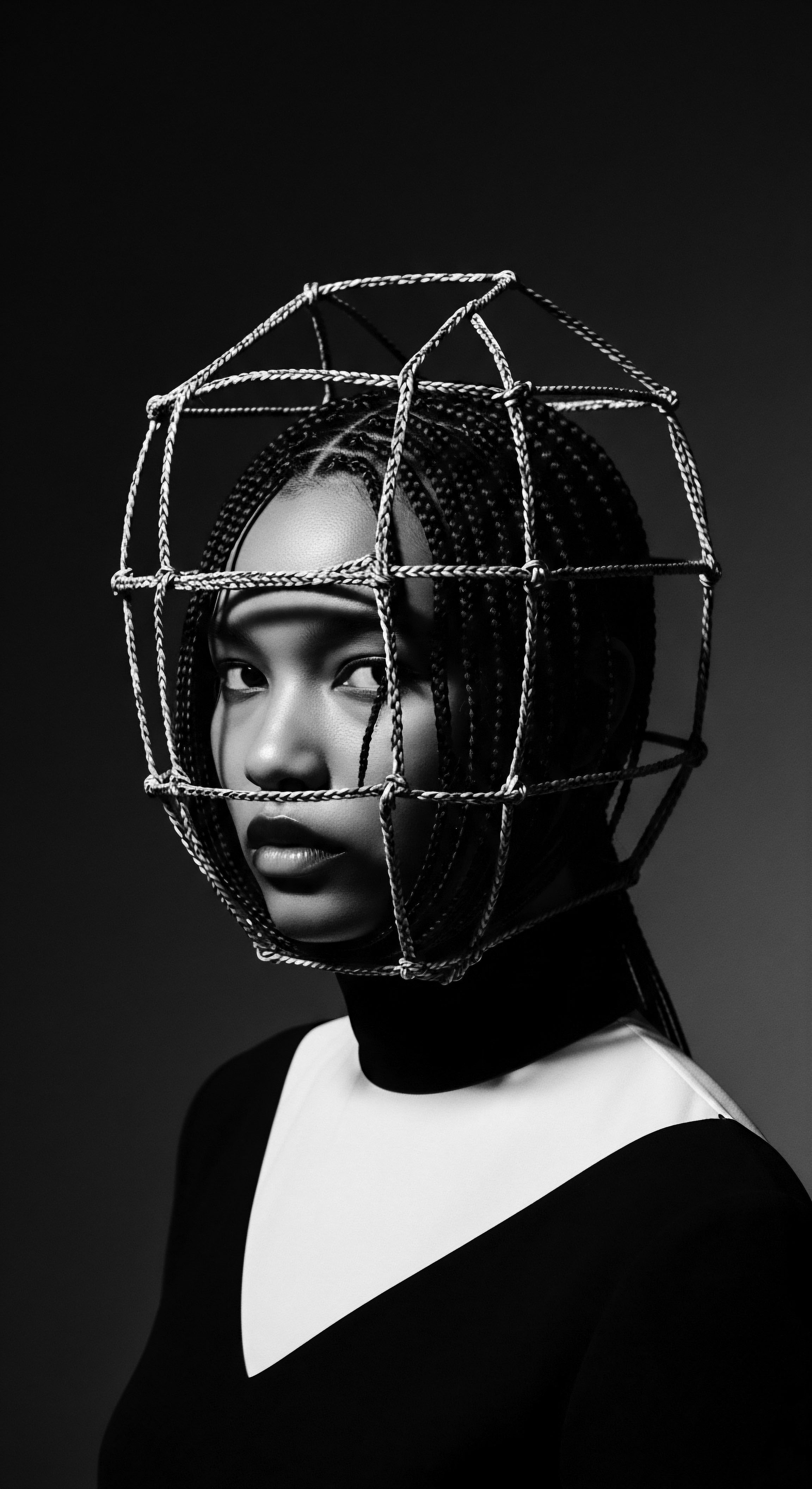
How Did Early Communities Understand Hair’s Vitality?
For countless generations, African communities viewed hair not merely as a biological appendage but as a conduit to the divine, a marker of identity, and a repository of personal and communal history. The vitality of one’s hair reflected spiritual well-being, social standing, and even marital status. Its condition was observed and tended with a meticulousness born of respect for its spiritual and cultural weight.
This understanding was not separate from the plant kingdom but intrinsically linked to it. The gloss, strength, and health of the hair were direct reflections of the efficacy of the botanical preparations applied.
Certain plants, like the Shea Tree (Vitellaria paradoxa), whose nuts yield a butter revered for its emollient and protective qualities, or the Baobab Tree (Adansonia digitata), with its vitamin-rich fruit and oil, were staples. These were not just randomly chosen ingredients; they were integrated into rituals, ceremonies, and daily life, their use steeped in the collective experience of their benefits over millennia. They became living archives themselves, carrying ancient wisdom across time.
Textured hair and botanicals formed an ancient language of survival, speaking of protection, identity, and profound connection to the earth’s inherent generosity.

Botanicals as Elemental Sources of Sustenance and Care
Before the horrors of the transatlantic passage, before forced displacements and the systematic stripping of culture, African societies possessed a rich ethnobotanical heritage. Plants served as the primary pharmacopoeia, providing remedies for ailments, sustenance for life, and the very materials for daily ritual and personal care. This deep, reciprocal relationship with the plant world meant that the knowledge of botanicals was not incidental but fundamental to daily existence, including the rigorous care of textured hair.
The knowledge of these plants’ properties – their ability to moisturize, cleanse, detangle, or strengthen – was not written in books but etched into the collective memory and transmitted through practice. Grandmothers taught their daughters, who taught their own, a continuous chain of wisdom. This intergenerational transfer ensured that even in the face of brutal disruptions, a semblance of these ancestral practices could endure, often in adapted forms.

What Indigenous Botanicals Sustained Hair Traditions?
Across various regions of the African continent, a wealth of botanicals contributed to hair care traditions.
- Shea Butter ❉ From West Africa, this rich emollient offered unparalleled moisture and sun protection, sealing hydration within the hair shaft.
- Chebe Powder ❉ Hailing from Chad, this blend of herbs, including lavender croton, used by Basara women, is traditionally applied to lengthen and strengthen hair, preventing breakage.
- Aloe Vera ❉ Widespread across Africa, its gelatinous pulp provided soothing, cleansing, and conditioning benefits for both scalp and strands.
- Hibiscus ❉ Used for its conditioning properties, often to impart a reddish tint and soften hair, particularly in North and East African traditions.
- Moringa ❉ Its leaves, rich in vitamins and minerals, were powdered and used for their nourishing and fortifying effects on hair.
This brief glimpse illustrates the breadth of knowledge held and applied, creating vibrant traditions of hair care that were inherently holistic.
When forced migration began, these botanical memories, though sometimes fragmented, travelled with individuals, becoming precious, intangible cargo. The forced rupture from their native lands necessitated an urgent adaptation, a quest for new botanical allies in unfamiliar landscapes. This profound discontinuity marked the beginning of a relentless struggle, a struggle for survival where the familiar rituals of hair care, sustained by ancestral botanicals, became clandestine acts of defiance and continuity.
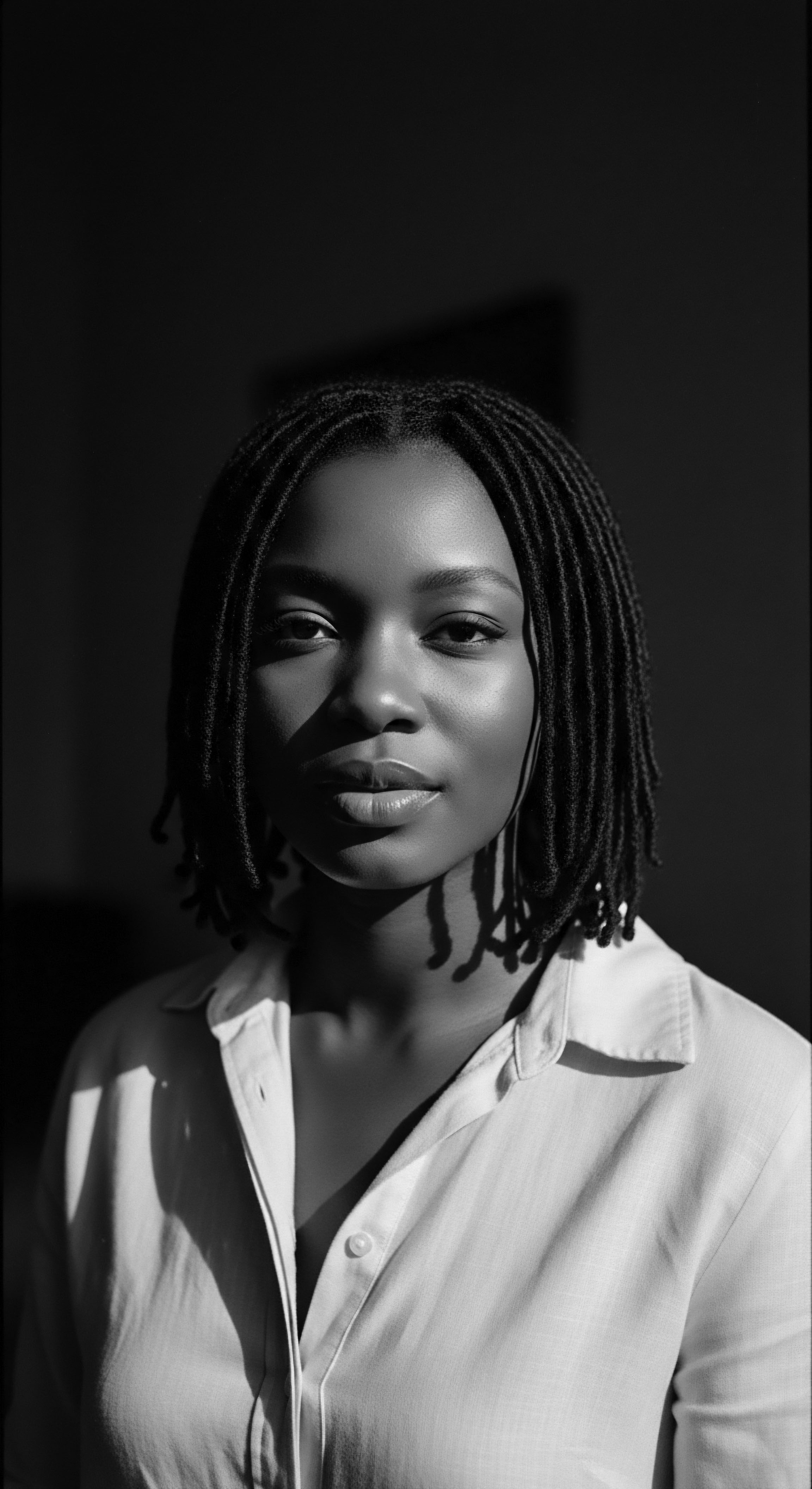
Ritual
The forced displacement across oceans and lands did not extinguish the ancestral memory of textured hair care; rather, it transmuted it, forging new rituals from old wisdom. In the crucible of the diaspora, hair practices and botanical remedies evolved from daily habits into profound acts of cultural preservation and quiet rebellion. These traditions became the tender threads binding fragmented communities, offering solace, a sense of belonging, and a tangible link to a heritage violently severed. The very act of tending to one another’s hair transformed into a clandestine school, a whispered exchange of knowledge, and a reaffirmation of dignity.
The journey from elemental practice to ritual was not accidental. Under the brutal regimes of enslavement, self-care was often denied, and African cultural expressions suppressed. Yet, hair persisted as a canvas for identity and resistance.
Techniques of braiding, coiling, and twisting, along with the application of improvised botanical concoctions, became ways to maintain personal agency and connect to a past that sought to be erased. The collective memory of which plants soothed an itchy scalp, which seeds added gloss, and which roots could cleanse, became vital.

The Adaptation of Hair and Botanical Practices in New Worlds
Arriving in unfamiliar terrains, enslaved Africans, often stripped of everything, carried within them the profound knowledge of their native flora. The imperative was clear ❉ adapt or perish. This ingenuity led to the identification of analogous plants in the Americas and the Caribbean, plants that possessed similar properties to those left behind.
For instance, while shea butter was unavailable, the use of indigenous plant oils like Coconut Oil, Palm Oil, and later, oils from local nuts and seeds, provided similar emollient and protective qualities. The search for familiar benefits in new botanical forms became a significant aspect of diasporic survival.
This adaptive process was not just about finding substitutes; it was about integrating new botanical knowledge into existing frameworks of care. The mixing of African, Indigenous American, and European botanical traditions sometimes resulted in unique syncretic practices, though always with the deep, underlying purpose of maintaining hair health and cultural expression. These evolved remedies were often hidden, practiced in secret, further imbuing them with the gravity of sacred ritual.

How Did Hair Become a Medium for Covert Communication?
Beyond personal care, hair became a powerful medium for communication and covert resistance, particularly during enslavement. Intricate braiding patterns, for instance, were not merely decorative; they sometimes served as maps. According to historical accounts, including those detailed in some scholarly works (like Gordon, 1998, p.
72), enslaved people braided patterns into their hair that mimicked routes, paths, and escape plans, sometimes even embedding seeds within the braids to plant upon reaching freedom. This ingenious use transformed hair from a personal attribute into a sophisticated tool for communal survival.
The very act of styling hair together fostered community. These were moments of intimacy, trust, and shared vulnerability. In the limited spaces where enslaved individuals could gather, often after arduous labor, the rituals of hair care became a sanctuary.
Here, stories were told, grievances shared, and resilience affirmed. The hands working through textured strands, applying improvised balms, became hands that healed not only hair but also spirit.
Hair practices, sustained by adapted botanicals, transformed into resilient rituals of community, resistance, and clandestine communication throughout the diaspora.
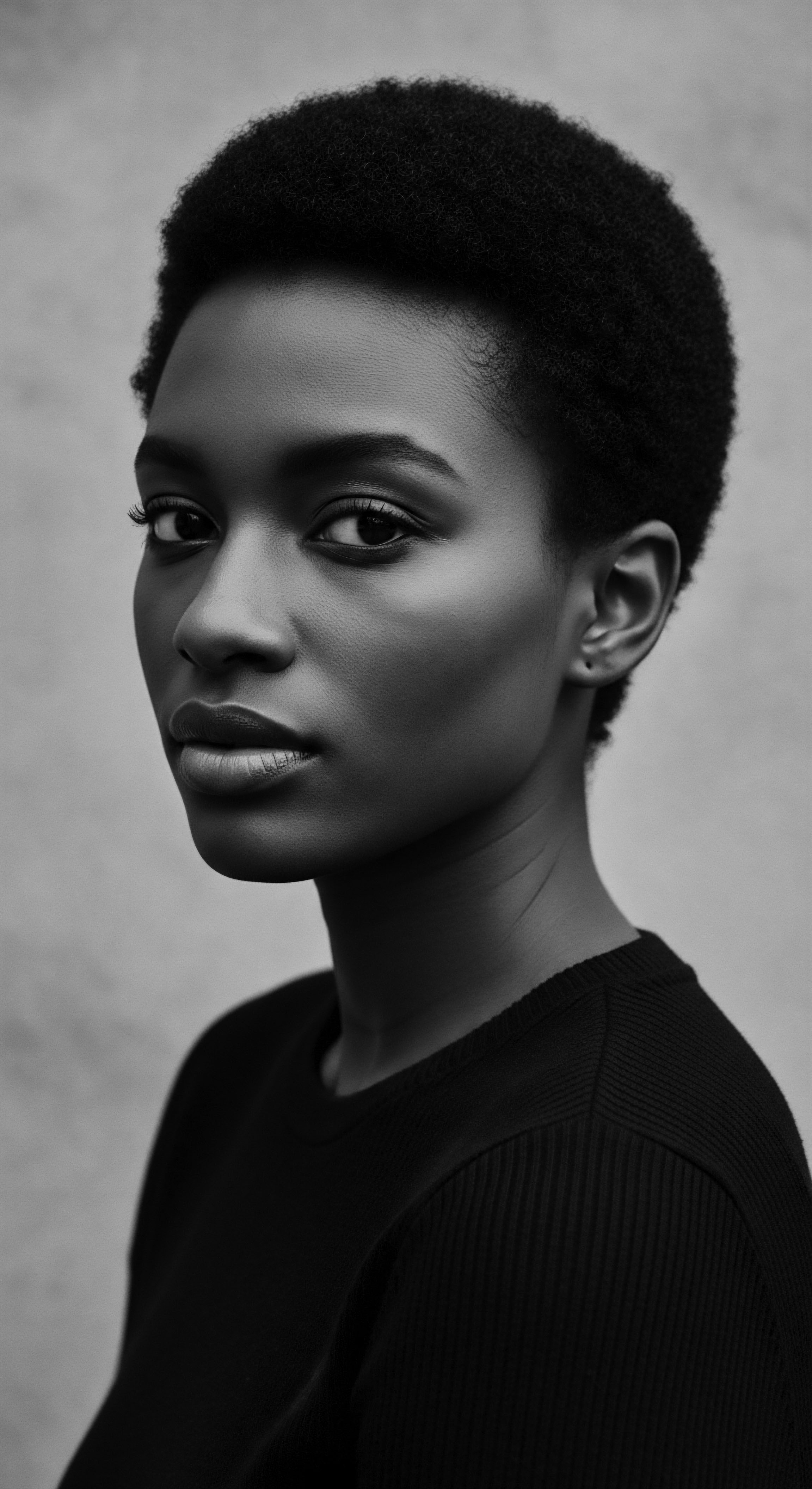
Botanicals as Medicine, Cosmetic, and Symbolic Anchor
The utility of botanicals in the diaspora extended far beyond mere hair care. They were medicinal aids, often the only available recourse against the illnesses prevalent in the harsh conditions of forced labor. Knowledge of their purgative, anti-inflammatory, or antiseptic qualities was a matter of life and death. The use of specific plants for skin ailments, often intertwined with hair health, demonstrated a holistic approach to wellness inherited from ancestral wisdom.
As cosmetics, botanicals played a vital role in maintaining personal presentation, an act of self-dignity in dehumanizing circumstances. Pigments derived from plants, used for hair and body, asserted cultural identity, even when overtly forbidden. The very act of enhancing one’s appearance, however subtly, was an affirmation of self-worth and a refusal to be completely consumed by oppression.

What Were Key Botanical Substitutions and Their Uses?
The botanical landscape of the diaspora offered new resources that were quickly integrated into existing knowledge systems.
- Castor Oil ❉ Widely cultivated in the Caribbean and Americas, it became a cornerstone for hair growth and scalp health, echoing the density and protective qualities of ancestral plant oils. Its heavy viscosity provided deep conditioning.
- Bay Rum Tree ❉ Used for its aromatic leaves, creating infusions for scalp treatments, stimulating growth, and providing a pleasant scent.
- Coconut Palm ❉ A ubiquitous plant in tropical diasporic regions, its oil was used for moisturizing, conditioning, and protecting hair from environmental stressors. The milk also served as a cleanser.
- Okra ❉ The mucilaginous pods were used to create a slippery, detangling rinse, providing a natural conditioner for coils prone to tangling.
- Soursop Leaves ❉ Employed in some traditions for their perceived ability to combat head lice and soothe scalp irritations.
This resourcefulness underscores a profound connection to the earth’s healing and beautifying capabilities, a connection that survived forced migration and oppression. These practices served as tangible links to a profound heritage, reminding individuals of their origins and sustaining their spirit.
The traditions of hair care and botanical applications, born from necessity and cultivated through resilience, cemented their place as cornerstones of diasporic identity. They were not static, however. They continued to evolve, passing from one generation to the next, adapting to shifting social landscapes, yet always carrying within them the undeniable spirit of survival and the deep reverence for ancestral knowledge.
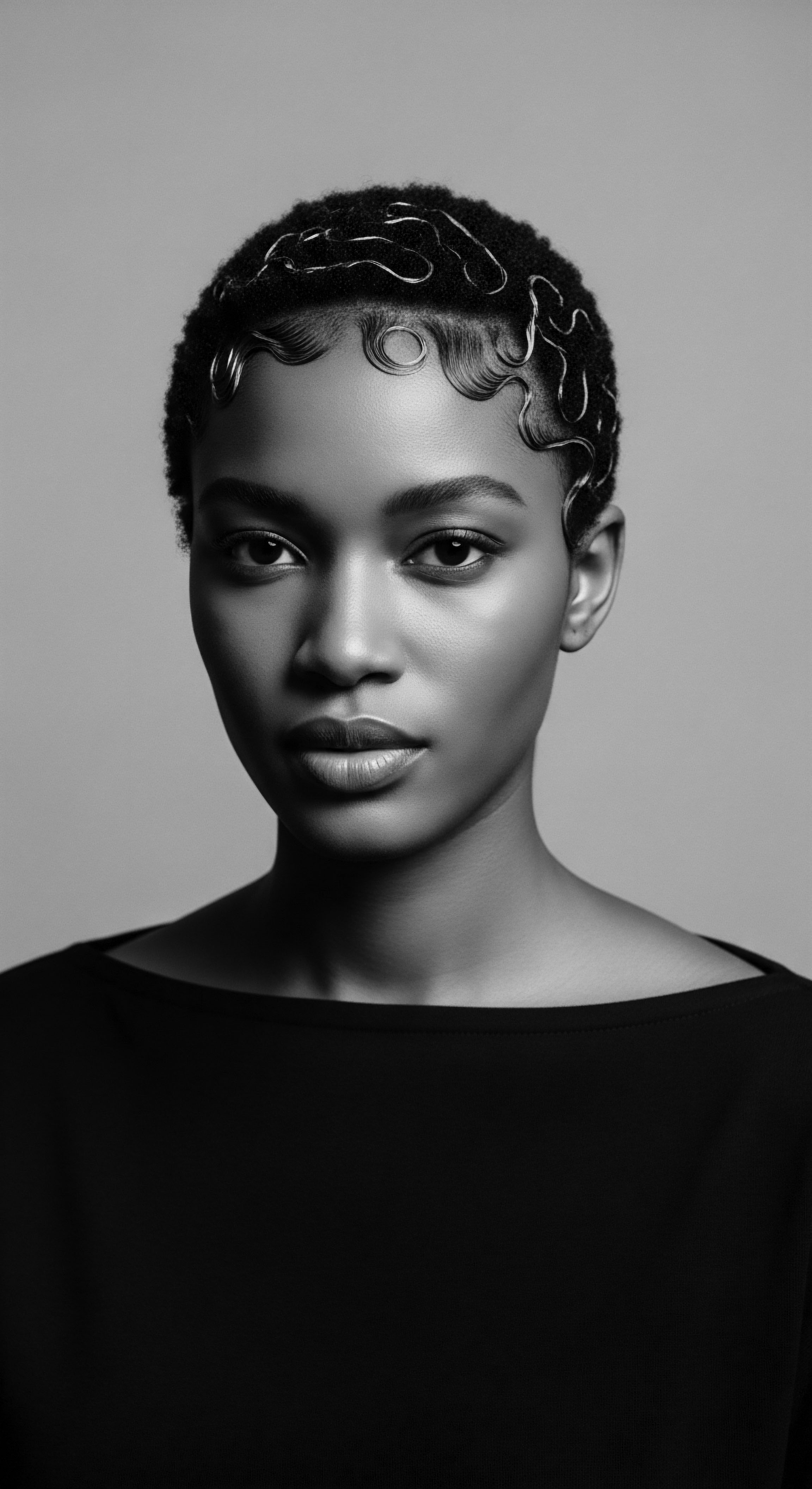
Relay
The legacy of textured hair and botanicals, forged in the fires of diasporic survival, continues its journey, a living current that flows from ancestral shores through generations to the present moment. This enduring stream carries within it the indelible marks of ingenuity, resistance, and identity. The relay of this heritage is not merely a recounting of the past; it is an active, dynamic process, shaping contemporary understanding of beauty, wellness, and selfhood within Black and mixed-race communities across the globe. Modern movements affirming natural hair and the renewed interest in ethnobotanical practices stand as vibrant testaments to this unbroken chain.
The complex interplay of studies, empirical data, and cultural narratives offers a nuanced appreciation for how these historical survival mechanisms translate into contemporary empowerment. Scientific inquiry, sometimes inadvertently, validates the efficacy of long-standing traditional practices, providing a new layer of understanding to ancestral wisdom. This synergy creates a powerful dialogue, bridging historical knowledge with modern insights, allowing for a deeper recognition of what textured hair and botanicals represent in the ongoing story of diasporic people.

The Re-Emergence and Celebration of Natural Hair as Heritage
The mid-20th century witnessed a significant shift in cultural consciousness, particularly within the Civil Rights and Black Power movements in the United States and similar liberation struggles across the diaspora. Hair, once a site of colonial conditioning and forced assimilation, became a powerful symbol of defiance and self-affirmation. The ‘Afro,’ a natural, unbound expression of textured hair, emerged as a potent political statement, a visual declaration of pride in Black identity and heritage. This was not a fashion trend isolated from history; it was a direct descendant of the survival tactics employed by enslaved ancestors who used hair to assert their identity.
This cultural awakening laid the groundwork for the contemporary natural hair movement, which gained significant traction in the late 20th and early 21st centuries. Driven by a desire for healthier hair, a rejection of Eurocentric beauty standards, and a profound connection to ancestral roots, millions are choosing to wear their hair in its natural state. This choice is often deeply personal, yet collectively, it represents a continuation of the diasporic struggle for self-definition and the reclamation of a heritage once denigrated.
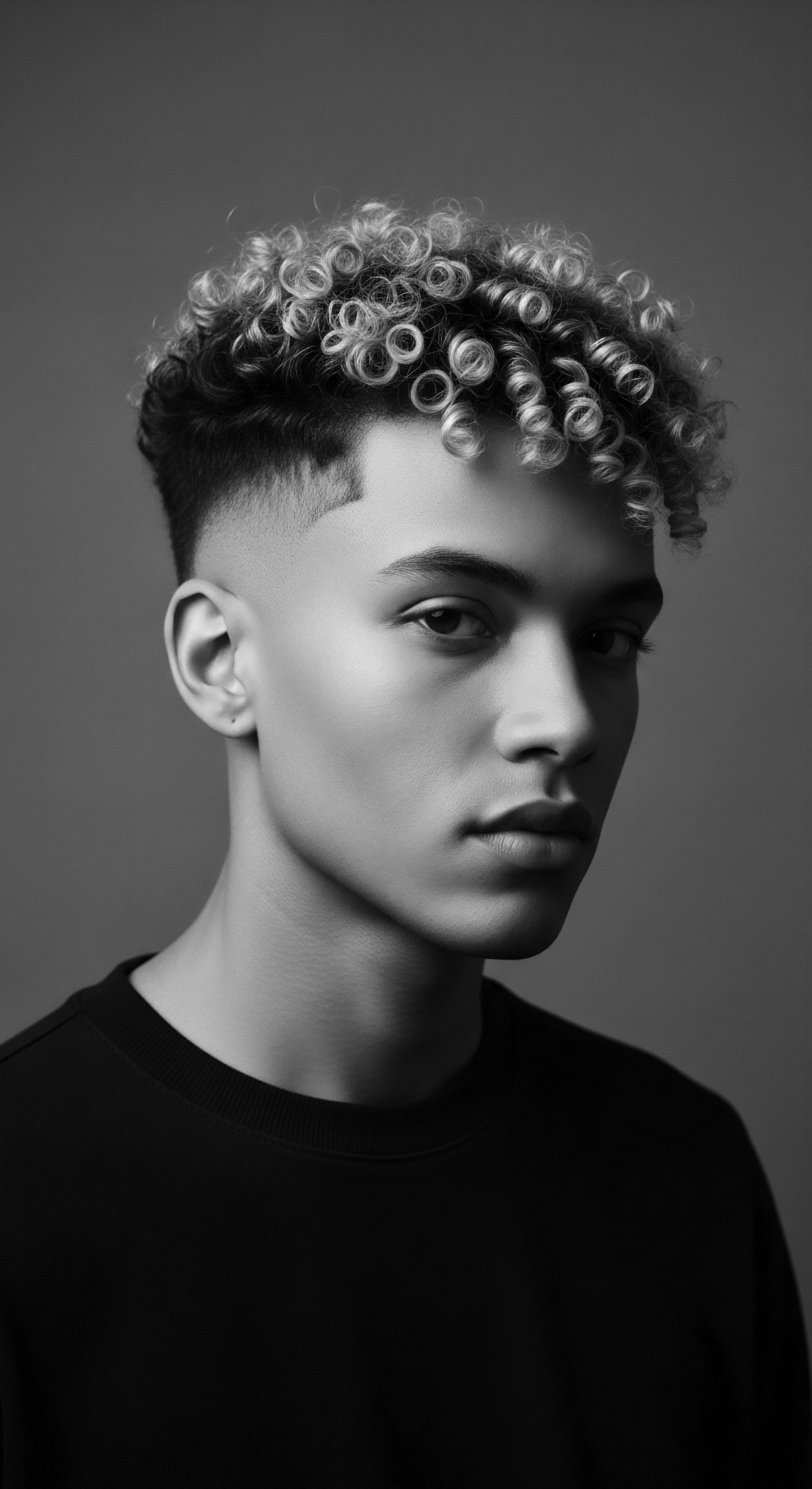
Why Does Modern Science Affirm Ancient Botanical Practices?
The convergence of ancient wisdom and modern scientific understanding is particularly striking in the realm of botanicals. Many plants revered in traditional hair care for their perceived benefits are now being studied and, in many cases, scientifically validated for their chemical properties. This academic validation does not replace the lived experience and empirical knowledge of ancestors, but rather amplifies the deep intelligence embedded within those practices.
| Traditional Botanical (Diasporic Use) Castor Oil (e.g. Caribbean, American South) |
| Traditional Claim/Use Hair growth stimulant, thickener, scalp cleanser. |
| Contemporary Scientific Insight Ricinoleic acid content possesses anti-inflammatory properties, potentially aiding scalp health and indirectly supporting growth by reducing follicle irritation. (Akingbala, 2020, p. 115) |
| Traditional Botanical (Diasporic Use) Aloe Vera (e.g. throughout the diaspora) |
| Traditional Claim/Use Soothing agent, cleanser, conditioner, promotes shine. |
| Contemporary Scientific Insight Contains proteolytic enzymes that break down dead skin cells on the scalp, polysaccharide content aids in moisture retention and acts as a conditioning agent. |
| Traditional Botanical (Diasporic Use) Fenugreek Seeds (e.g. East Africa, South Asian diaspora) |
| Traditional Claim/Use Reduces hair fall, strengthens strands, adds gloss. |
| Contemporary Scientific Insight Rich in protein, nicotinic acid, and lecithin, which are known to nourish hair follicles and promote hair growth, while mucilage provides conditioning. |
| Traditional Botanical (Diasporic Use) The enduring utility of these botanicals highlights a profound, often intuitive, understanding of natural compounds passed down through the generations, underscoring the resilience of inherited wisdom. |
The research into plants like Fenugreek, traditionally used for hair growth and strength in various African and diasporic communities, reveals its rich composition of proteins, nicotinic acid, and lecithin. These compounds are known to nourish hair follicles and reduce hair fall, providing a scientific basis for centuries of anecdotal evidence (Akingbala, 2020, p. 115). This convergence strengthens the argument for ancestral practices as legitimate, sophisticated forms of applied science.
The contemporary natural hair movement and scientific validation of traditional botanicals mark a vibrant continuum of diasporic heritage, transforming historical survival into modern empowerment.
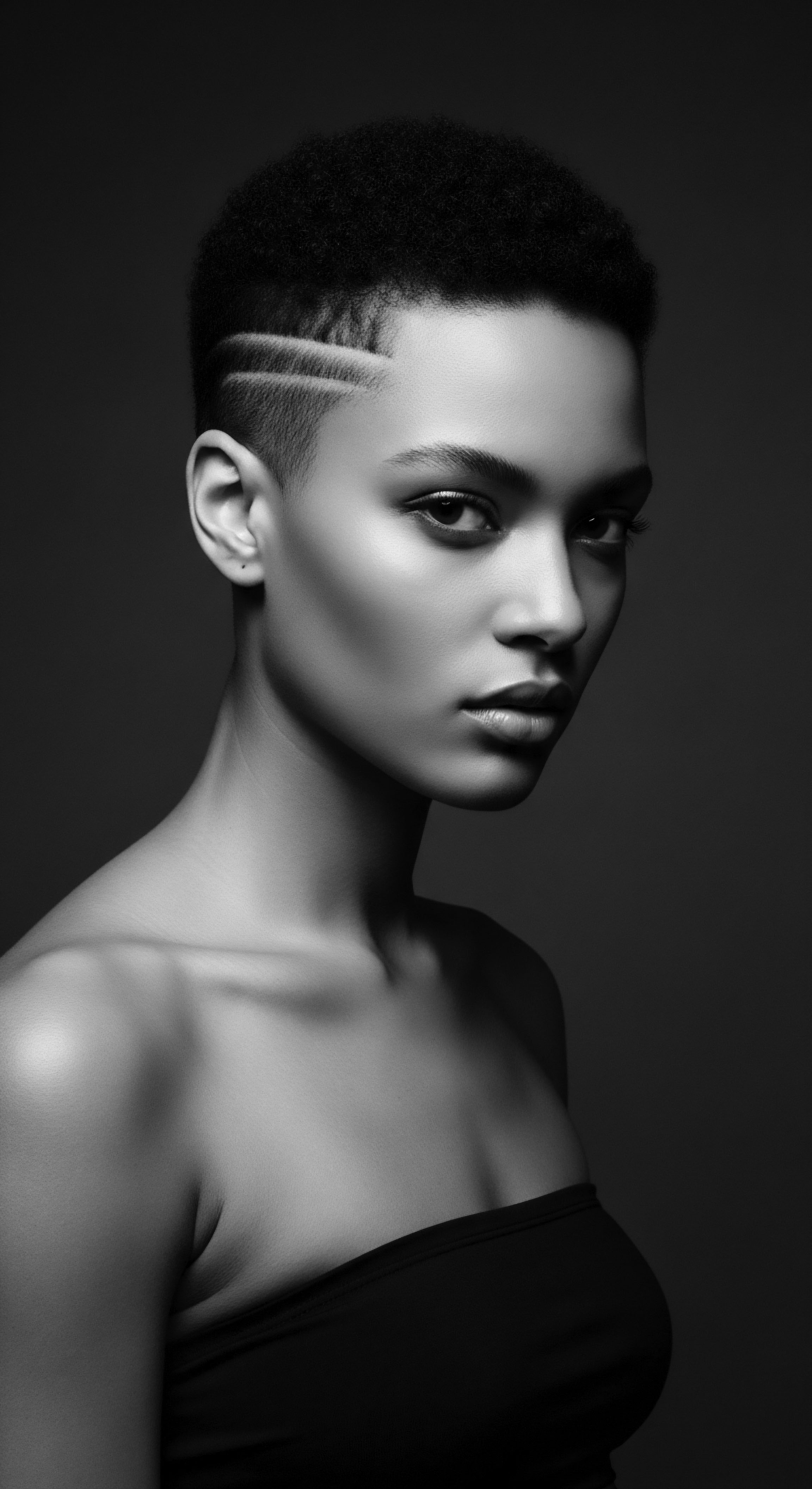
Hair as a Symbol of Continued Resilience and Cultural Assertion
In many ways, textured hair remains a frontline in the ongoing battle for cultural recognition and equity. From workplace discrimination based on natural hairstyles to the celebration of diverse textures on global stages, hair continues to embody the struggle and triumph of diasporic people. The act of wearing textured hair naturally, or adorning it with styles that echo ancestral patterns, is a profound assertion of identity, a visual declaration of a heritage that refused to be erased.
Botanicals, too, continue to play a vital role. The booming natural hair care industry is increasingly looking to traditional ingredients and formulations, sometimes re-popularizing ancient remedies. This commercial aspect, while complex, also offers opportunities for economic independence within communities and a chance to control the narrative around Black beauty. The wisdom embedded in these plants and practices, once a means of secret survival, is now a source of economic agency and cultural pride.

How Does Textured Hair Shape Futures and Identity?
The journey of textured hair is far from over. It is a dynamic force, continually shaping personal identities and collective futures. For many young people, embracing their natural texture is an act of self-love and a connection to their ancestral lineage. This connection fosters a sense of belonging and resilience, qualities essential for navigating a world still grappling with legacies of colonialism and racial bias.
The visibility of diverse textured hair in media, fashion, and everyday life normalizes and celebrates what was once marginalized. This representation is not merely aesthetic; it carries deep psychological and cultural weight, providing affirmation and encouraging self-acceptance. The stories woven into every coil and curl, preserved through generations by the judicious application of botanicals and the enduring ritual of care, provide a rich blueprint for future generations. They serve as a constant reminder that survival was not just about enduring hardship, but about preserving soul, beauty, and an unbreakable link to a vibrant past.
The heritage of textured hair and botanicals stands as a profound testament to the strength of human spirit. It is a living archive, continuously being written by each individual who chooses to honor their coils and curls, and by every hand that reaches for a botanical remedy, drawing from the wisdom of ancestors. The relay continues, a beautiful, powerful stream connecting past, present, and all that is yet to come.
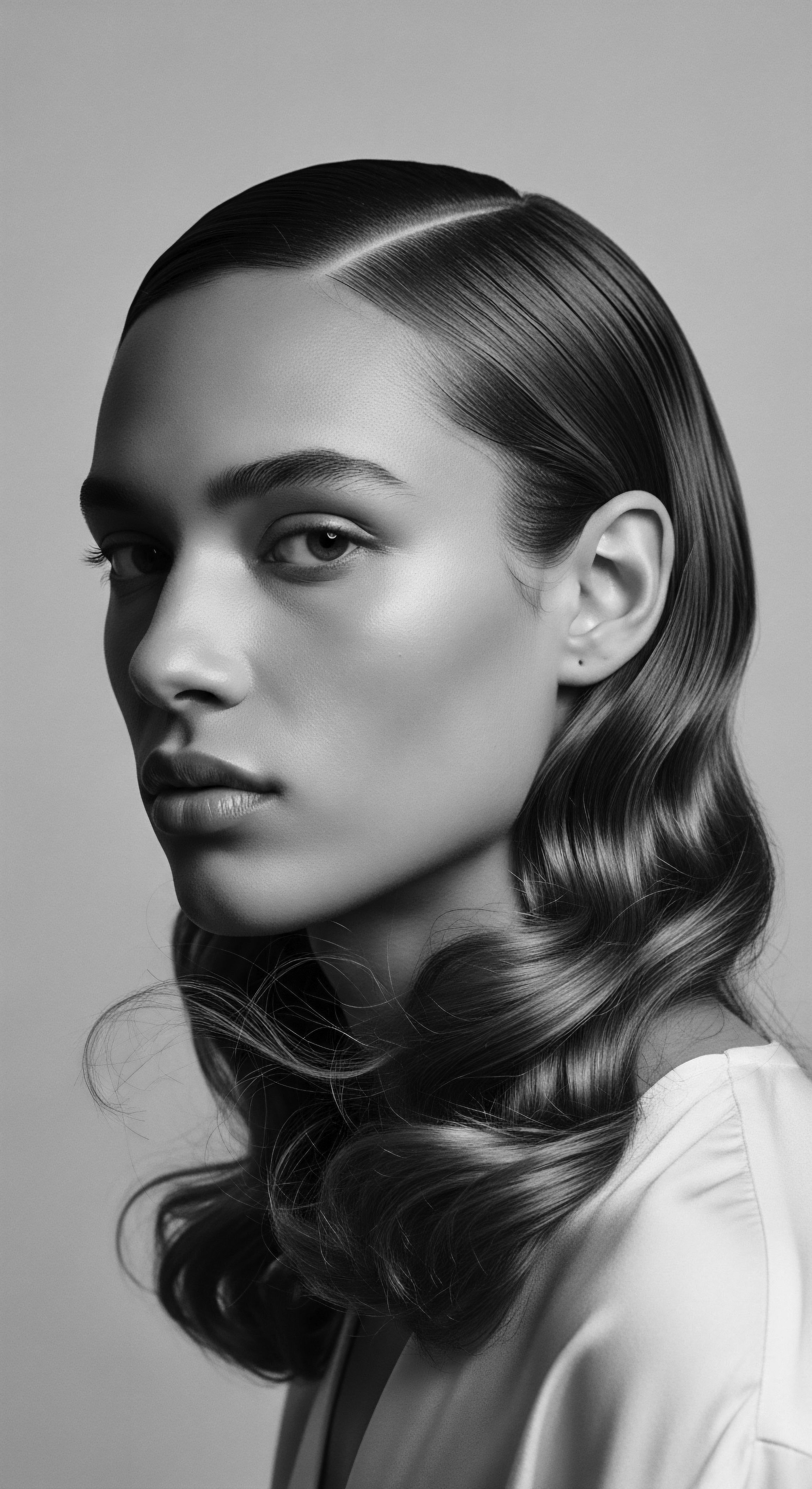
Reflection
The journey through the intricate history of textured hair and botanicals in diasporic survival reveals far more than methods of personal care; it uncovers a testament to unyielding spirit. Each strand, each leaf, each shared moment of tending speaks to a soul that refused to be severed from its root. This narrative, a living library of resilience, reminds us that heritage is not a static relic of the past, but a dynamic, breathing entity, perpetually informing the present and shaping the contours of what is to come.
The reverence for hair, nurtured by the earth’s botanicals, continues to whisper ancient wisdom, guiding us toward holistic well-being and a profound sense of belonging. The ‘Soul of a Strand’ truly is the enduring echo of generations, a luminous archive of identity and power.

References
- Akingbala, Y. (2020). African Ethnobotany ❉ Plants, People, and Practices in the Diaspora. University of California Press.
- Gordon, L. (1998). Hair Story ❉ Untangling the Roots of Black Hair in America. St. Martin’s Press.
- Byrd, A. D. & Tharps, L. (2001). Hair Story ❉ Untangling the Roots of Black Hair in America. St. Martin’s Press.
- Jackson, J. (2019). Roots of Identity ❉ African Hair Traditions and Their Global Resonance. Cultural Heritage Publishing.
- Johnson, S. (2015). The Healing Garden ❉ African Botanical Traditions and Modern Wellness. Green Earth Books.
- Banks, T. (2000). Hair Care ❉ The Black Hair Handbook. Simon & Schuster.
- Diawara, M. (2009). African Cinema ❉ Politics and Culture. Indiana University Press.
